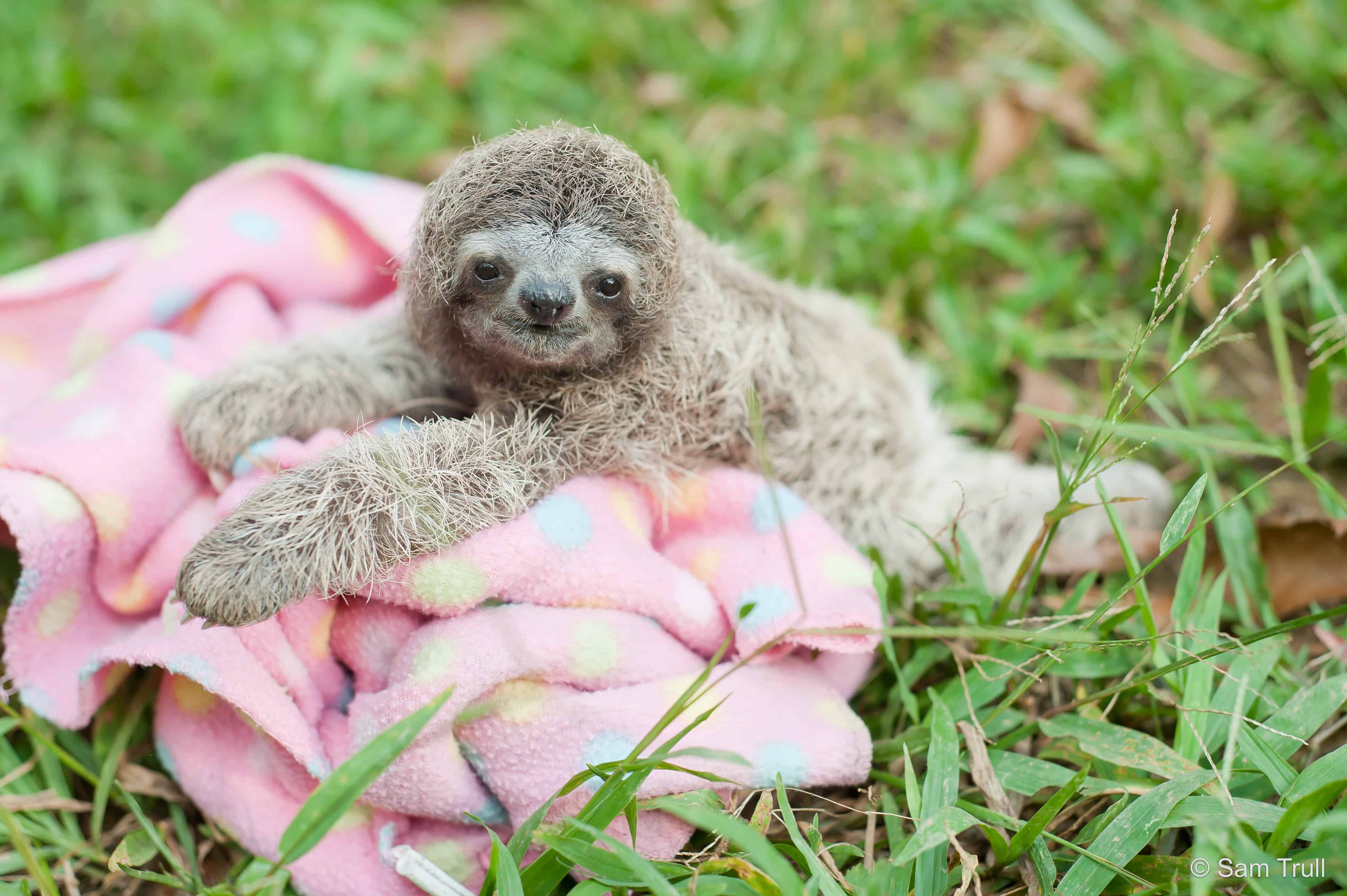1. All sloths are excellent swimmers.
They instinctively know how to swim once they hit the water. This ability makes a lot of sense, because the tropical environments where they live include various bodies of water (rivers, oceans, etc). Besides not wanting to drown, swimming may be the most efficient way to cross gaps in the forest canopy.
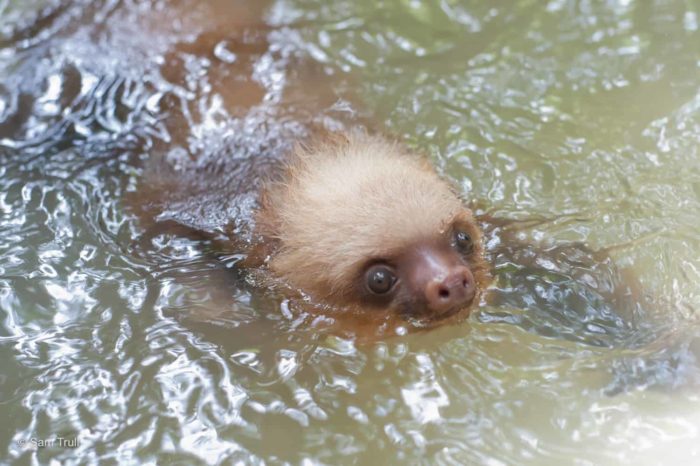
2. Sloths have a special species of moth that lives only in their hair.
In addition to the moths, their hair is like its own ecosystem: hosting algae, fungus, various parasites, beetles and more! All very good reasons to not touch a sloth!
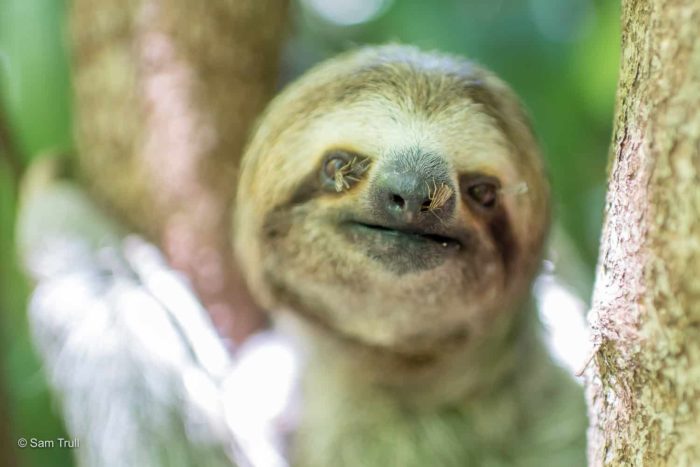
3. The two kinds of sloths (two-fingered and three-fingered) have been evolving separately for over 40 million years
. They are the most extreme example of convergent evolution in mammals. Convergent evolution is when two species evolve similar traits because of time spent living in similar environments — not from a common ancestor. This makes them about as closely related as we are to capuchin monkeys!
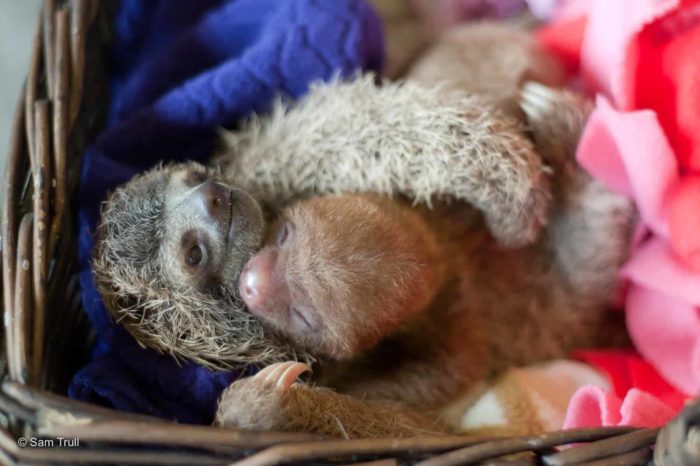
4. Sloths aren’t lazy, dumb or clumsy.
They are actually super efficient and excellent climbers. Somehow, a rumor got started that sloths are so dumb that they will mistake their arm for a branch! This is certainly not true. They are meticulous climbers with excellent spatial memory, and while they do often fall, their skeletal structure is built to withstand falls from very tall heights. I have personally seen a sloth fall from over 20 meters without a single scratch!
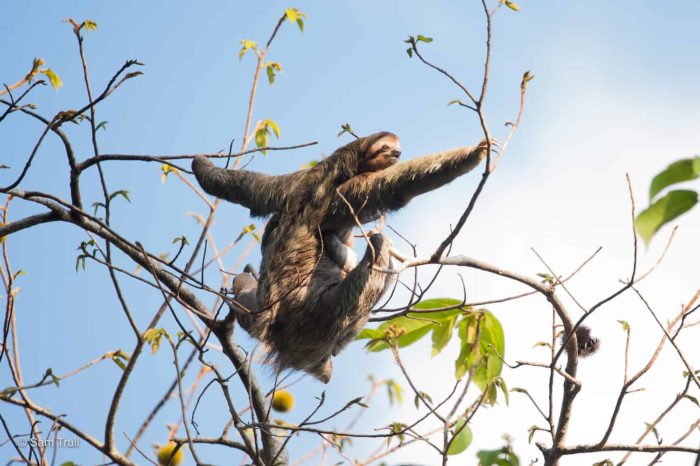
5. Sloth squeaks aren’t actually “cute” to sloths (or human surrogate sloth moms)!
Baby sloths only vocalize when they are terrified because they are alone and desperate to find their mother. It represents a sudden/accidental separation between mom and baby and is a sign that the baby is extremely stressed.
In the rehab process, we try to make sure that the orphaned sloths have a safe environment to practice their climbing skills and are never forced into a situation that makes them cry. That kind of stress isn’t good for their health and isn’t necessary for them to learn how to be wild. In fact, it likely makes it take longer for them to gain the necessary confidence to explore and become independent. Babies who feel safe and secure grow up to be confident adults.
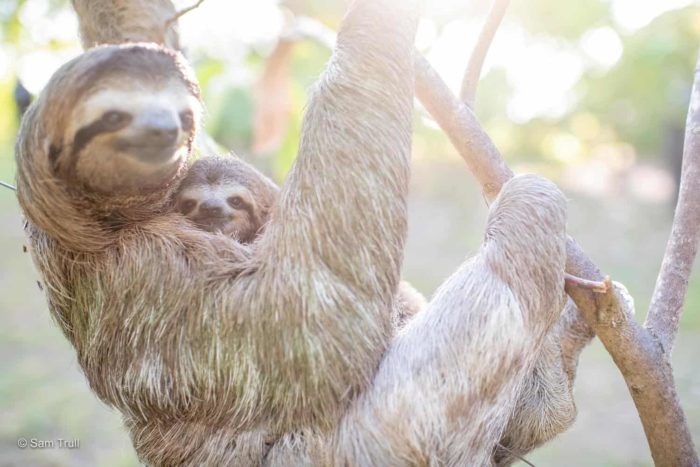
The Sloth Institute is a partner of Toucan Rescue Ranch assisting with the Saving Sloths Together program.

